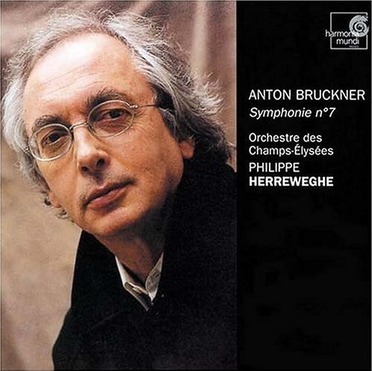










We have become used to hearing Bruckner's symphonies as "cathedrals in sound". From Furtwangler through Klemperer, Jochum, Bohm, Karajan, Wand and on to Haitink it has been all about scale (monumental, granite-like, arching, towering). As the symphony orchestra's sound has developed - to become ever more homogeneous, more transparent and, lets face it, louder - so has the conception of these symphonies. It is extraordinary how overall orchestral "sound" has become so fundamental to Bruckner performance.
Herreweghe gets us back to the sounds made by individual instruments and to the music they are playing individually or in small groups, and he uses the underlying pulse to provide the joining and supporting structure. He achieves this by resetting the balance between the orchestral instruments to something akin to what Bruckner would have expected to hear when he was composing.
The overall effect is subtle but very beautiful. As Herreweghe argues in the booklet, we get back to the purity of the music - think of Bruckner succeeding Bach, Mozart and Schubert rather than as preceeding Mahler and Strauss. There is very little of the Romantic in this conception of Bruckner, nor is it overtly spiritual. It is full of grace and clarity and musical beauty and it is gorgeous.
| Track |
|---|
| Allegro moderato |
| Adagio. Ser Feierlich Und Sehr Langsam |
| Scherzo. Sehr Schnell |
| Finale. Bewegt Doch Nicht Schnell |

